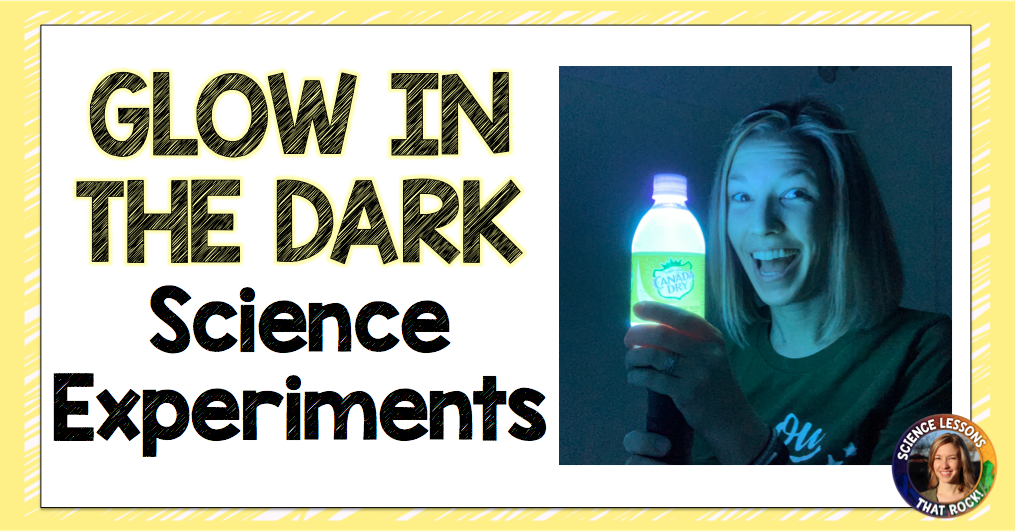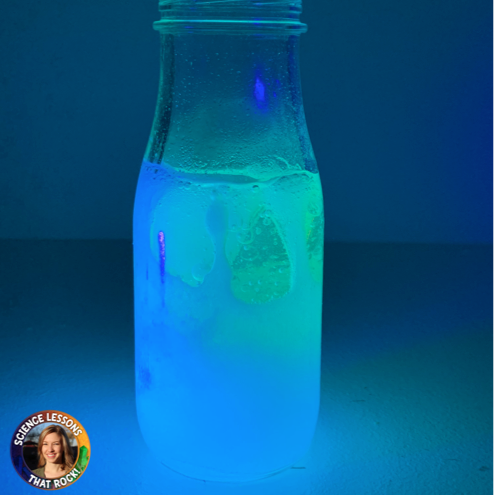It doesn’t matter what age you are, glow in the dark experiments are a blast!Did you know that tonic water glows under a black light? It has a chemical in it called “quinine” that causes it to glow. You can substitute out tonic water for regular tap water in some of your go-to experiments to make them glow! Here are a few of my favorites:
OOBLEK!
Ooblek is super fun to make when learning states of matter. Is it a solid? Is it a liquid? (It’s a colloid). To make ooblek, you normally mix 1 part water to 2 parts cornstarch. Sub out tap water for tonic water and now you have a glowing non-Newtonian fluid. Around Halloween we call them “ghost guts!”
RUBBER EGG
When teaching cell membranes, many teachers do the classic rubber egg experiment. In this lab, you begin by dissolving the shell of an egg with vinegar (change out the vinegar on day 2 and continue to let it sit about 2 more days). Once your shell is dissolved you are left with the membrane of the egg sans shell. You can take it a step further and soak your rubberized egg in different liquids such as corn syrup and see what happens. This simulates osmosis and how cells swell in hypotonic solutions and shrink in hypertonic solutions.To make your rubber egg glow, use a 50-50 mixture of vinegar and tonic water. (You could even be sneaky and add tonic water to a random few beakers from the class and freak them out by telling them they must have gotten radioactive eggs).
When teaching cell membranes, many teachers do the classic rubber egg experiment. In this lab, you begin by dissolving the shell of an egg with vinegar (change out the vinegar on day 2 and continue to let it sit about 2 more days). Once your shell is dissolved you are left with the membrane of the egg sans shell. You can take it a step further and soak your rubberized egg in different liquids such as corn syrup and see what happens. This simulates osmosis and how cells swell in hypotonic solutions and shrink in hypertonic solutions.To make your rubber egg glow, use a 50-50 mixture of vinegar and tonic water. (You could even be sneaky and add tonic water to a random few beakers from the class and freak them out by telling them they must have gotten radioactive eggs).
DIY LAVA LAMP
Want to make your own lava lamp? Fill a container with 50% tonic water and 50% vegetable oil. Turn off the lights, add your black light, drop in an alka selzer tablet, and enjoy the show! This can be done to reinforce density (layers) and chemical reactions (CO2 bubbles).
Want to make your own lava lamp? Fill a container with 50% tonic water and 50% vegetable oil. Turn off the lights, add your black light, drop in an alka selzer tablet, and enjoy the show! This can be done to reinforce density (layers) and chemical reactions (CO2 bubbles).
Looking for more spook-tacular Halloween science ideas? Check out this blog post!














